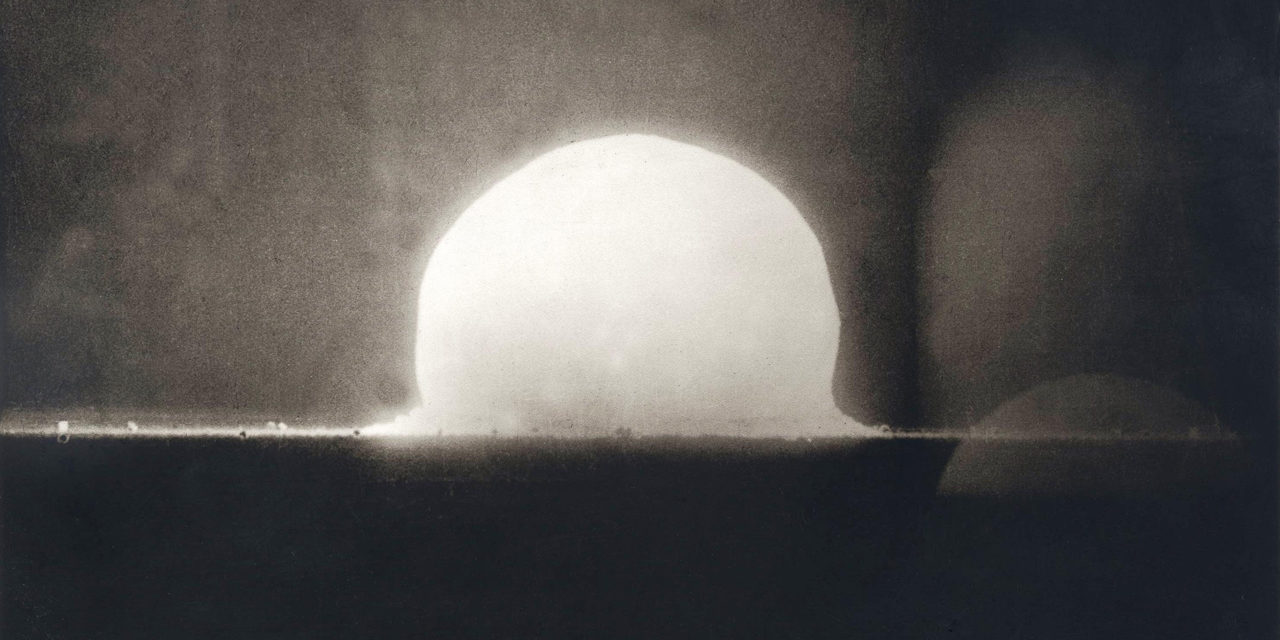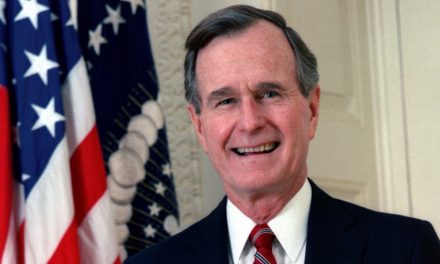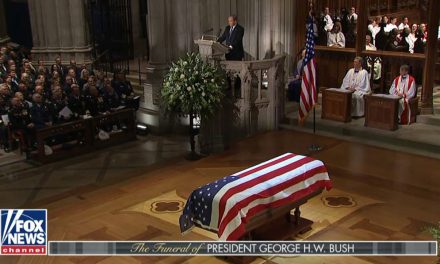In the silence and darkness of the New Mexico desert, a team of scientists and engineers waited to see if years of research would result in the world’s first successful atomic bomb test. At 5:28 a.m. on July 16, 1945, these men saw the sunrise twice. The world had officially entered the nuclear age.
It was at the insistence of Albert Einstein that the United States first started its nuclear program, and it wasn’t to defeat the Japanese but to try and match a potential Nazi nuclear weapon. The Germans never achieved their goal. By the time the Nazis eventually surrendered in May 1945, the nuclear program was well on its way to completion.
Known as the Manhattan Project, the project utilized some of the most brilliant scientific minds across the country to seemingly do the impossible – quickly develop an atomic weapon for use in the war effort. They did it in just three years, which was an incredible achievement considering that just seven years earlier an atomic weapon became conceivable after scientists split an atom for the first time.
One of the biggest obstacles that the bomb builders had to overcome was the lack of uranium 235, a naturally occurring isotope attached to uranium 238. The process to get the isotope uranium 235 from 238 took place at an enormous laboratory in Oak Ridge, Tennessee. The centrifuge only produced enough material for one bomb, which was eventually nicknamed “Little Boy” and later dropped on Hiroshima.
Scientists also decided that plutonium-239, an artificial agent, would work, and that material was developed at the massive Hanford Site in Washington State, where the water from the Columbia River could be used to cool the site. There was enough material for two bombs.
However, they weren’t sure if the design for the plutonium bomb would actually work.
The uranium-based bomb had a gun-type design that didn’t require any tests. On the flip side, the plutonium bomb was an implosion-type weapon with a more complex and theoretical design, so they needed to test it.
“The physicists were very skeptical as to whether the lenses would work properly,” chemist George Kistiakowsky recalled. “I bet [J. Robert] Oppenheimer quite a bit of my money, about six or seven hundred dollars against ten dollars, that the explosive part would work and there would be some nuclear reaction.”
In the wee hours of that July morning, scientists crowded around various secure locations to witness the test of the bomb, now nicknamed “the Gadget.” In a rather famous story, Edward Teller, a physicist that would eventually become the father of the more powerful hydrogen-bomb, made everyone rather nervous as he applied sunscreen and passed it around to others as well.
At 5:28 a.m., the desert was engulfed in light, flame, and heat. It was like a mini sunrise. Much to the relief of the scientists gathered, the design, which would become the bomb eventually dropped on Nagasaki, worked.
One eyewitness, William Spindel, described the moment like this: “It was the most shocking, enormous explosion that I had ever seen. I was about twenty miles away from the site. We were supposed to keep our eyes closed for the first ten seconds because of ultraviolet radiations.”
“I estimated that at twenty miles away, the explosion traveling at the speed of sound would take about a minute to reach me. It was the most intimidating minute I have ever spent. Seeing the terrible ball, growing and growing, enormous colors. What kind of blast could it be when it finally got to me? Fortunately, it wasn’t that great because I’m still here.”
But perhaps the most famous line from that morning came from the man himself, Dr. J. Robert Oppenheimer. Towards the end of his life, the once national hero had a spectacular fall from grace as he came under investigation from the House Unamerican Activities Committee and accused of being a Communist supporter and Soviet spy. He was never a spy, but the public “trial” he was forced to endure over the future of? his security clearance left him publicly humiliated.
The so-called “father of the atomic bomb” lived to regret the loss of life caused by his weapon. In an interview two years before his death, he famously said, “We knew the world would not be the same. A few people laughed. A few people cried. Most people were silent. I remembered the line from the Hindu scripture, the Bhagavad-Gita. Vishnu is trying to persuade the Prince that he should do his duty and to impress him takes on his multi-armed form and says, ‘Now, I am become Death, the destroyer of worlds.’ I suppose we all thought that, one way or another.”
On August 6, the U.S. military dropped “Little Boy” on Hiroshima and then dropped “Fat Man,” the plutonium device, just days later on Nagasaki. More than 300,000 people died from the blast, radiation sickness, and later, cancer. Japan’s emperor surrendered on August 15, and the country officially surrendered on September 2.
The site of the Trinity Test remains a military facility and opens only twice a year for visitors.
Photo from Shutterstock
Visit our Election 2020 page






